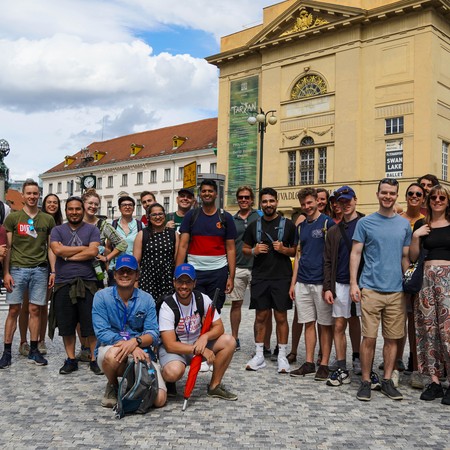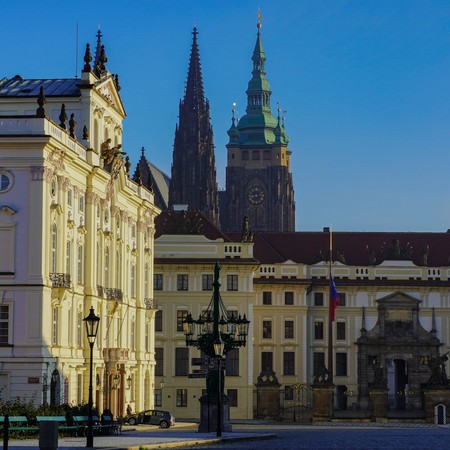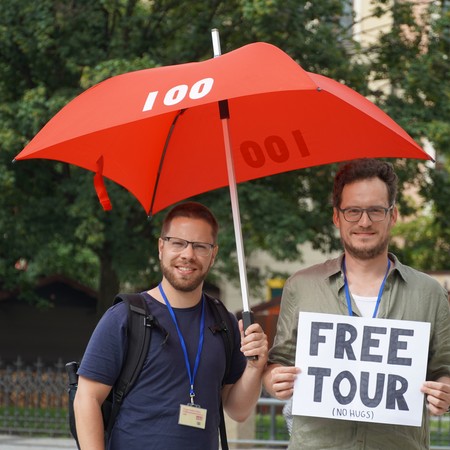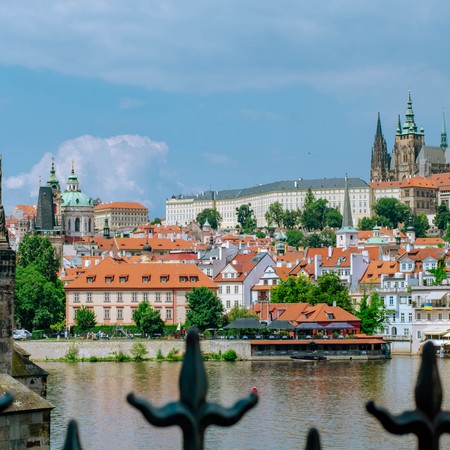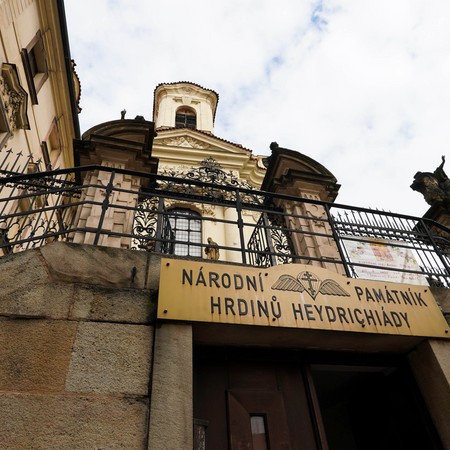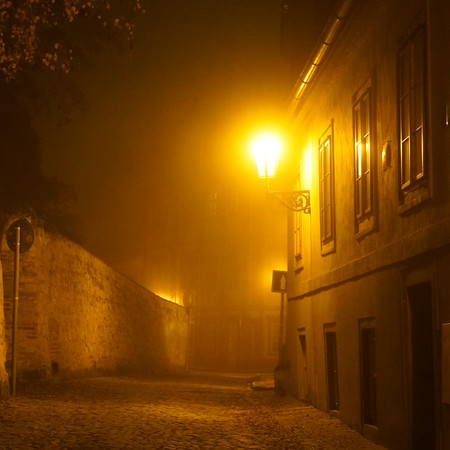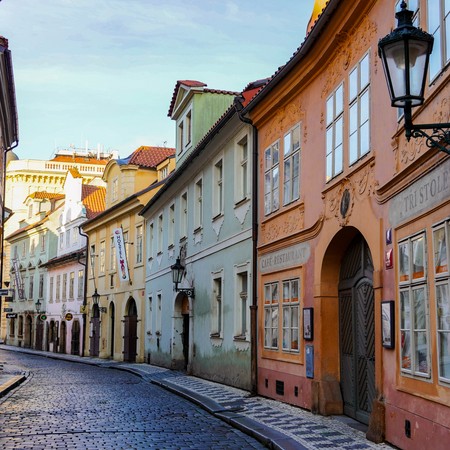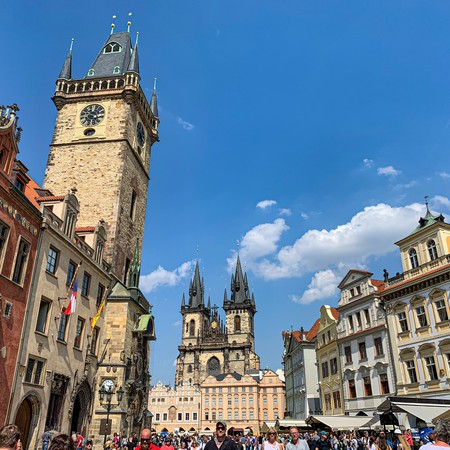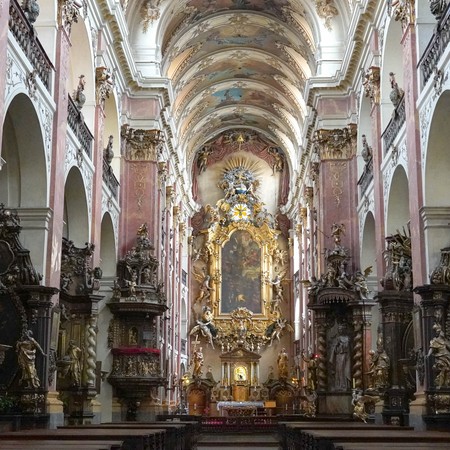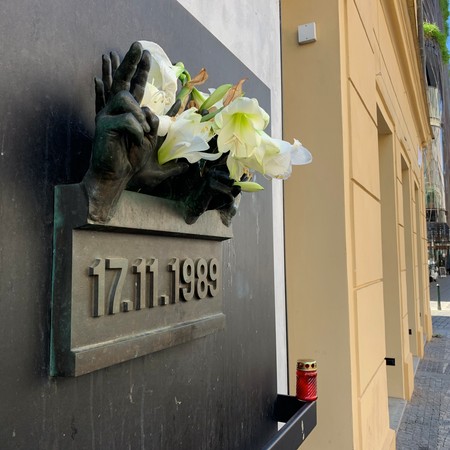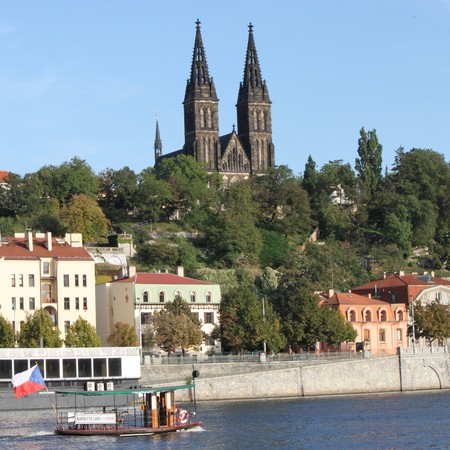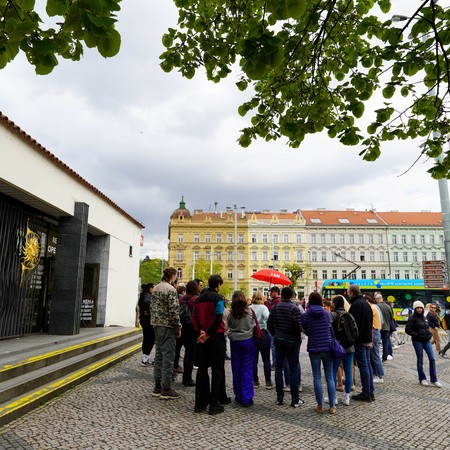Vysehrad Fortress - Prague
What is Vysehrad?
Vysehrad is a national cultural monument located on the south of Prague's historical city center. Vysehrad nowadays is basically a park inside of the former fortress area, but it used to be a castle of the Czech royal dynasty of Premislids.
A Brief History of Prague Vysehrad
The first mention of Vysehrad dates back to the end of the 10th century AD, when the royal acropolis, the church of St. John Evangelist, and the royal mint were established on top of the hill. We owe the 'discovery' of Vysehrad to the mint masters, whose coins from the year 999 were found during the excavations and helped to determine the age of this iconic landmark.
The next step in the history of Vysehrad was taken in 1070 when duke Vratislav II moved here and established a new ecclesiastical institution - Vysehrad Citadel. It is the oldest still-functioning clerical institution in the Czech Republic nowadays. Rumor has it, that Vratislav's decision to move his royal residence and found Vysehrad Citadel was caused by an argument with his brother, Jaromir, who was a Prague Castle bishop. Whether it was brought about by the sibling rivalry or not, Vysehrad Citadel has been one of the strongholds of the church with its Basilica of St. Peter and Paul that used to fall directly under the Pope's jurisdiction. Two other shrines - basilica of St. Lawrence and Rotunda os St. Martin - and the first bridge in Prague were built in the 11th-century Vysehrad.
In 1140, Vladislav II moves back to the Prague Castle and Vysehrad's influence starts to weaken. The last queen of the Czech royal dynasty of Premyslids, Elizabeth, spends her last days here in 1330. Her son, Charles IV, comes back to Prague only in 1346, but for him, Vysehrad is more of a legendary birthplace of the Czech people rather than a seat of political power. For this reason, King Charles IV started a tradition that every Bohemian ruler has to spend the night before his coronation in Vysehrad and then in the morning, dressed as a plowman, continue through the Royal Way to St. Vitus Cathedral. In 1348-50 the defenses of Vysehrad were consolidated and included in the area of the New Town, and four new palaces were built in the royal acropolis.
Despite this period of prosperity, Vysehrad very soon becomes a battleground during the Hussite War in 1419-1435. The Vysehrad battle on November 1st, 1420 was fought between king Zikmund's crusaders and armed Hussite peasants, which ended with the victory of the latter. Hussites sieged and ransacked Vysehrad destroying the kings' residence and most of the churches in the citadel. Vysehrad has never fully recovered after its battle.
At the end of the 15th century, Vysehrad becomes inhabited and the citadel comes back to its old walls. Peace lasts till the Thirty Years War when the Swedish army attacks and destroys Vysehrad's defenses showing that it cannot stand a chance in a long-term military campaign.
From 1650, an architect Innocenzo de Conti attempts to transform Vysehrad into a modern fortress. Even though the citadel had survived, most of the medieval buildings were destroyed. Three Vysehrad gates (Cihelna, Leopoldova nad Taborska Brana) were constructed together with the fortification walls by the end of the 17th century. During the War of the Austrian Succession, the French army had briefly occupied Vysehrad and built Gorlice Casemates tunnels in the fortification walls. Casemates were later used as a food-warehouse and filled up with potatoes almost to its ceiling.
In 1763, Vysehrad Citadel returns after all war exiles and loses its Pope protection becoming a subordinate of Prague's archbishopric. Emperor Joseph II, who releases his famous anti-corruption reform for monasteries and clerical organizations, orders to close the citadel, but calls it back a few days before his death.
During the period of the Czech National Revival in the 19th century, Vysehrad became a symbol of Bohemian legacy. Vysehrad's perception as a cradle of the Czech nation was formed mainly thanks to forged historical documents, such as Zelenohorsky and Kralovedvorsky manuscripts, that told legends of the mythical Libuse, and other folklore characters.
Things to see in Vysehrad, Prague
- Basilica of St. Peter and Paul - this church was founded in 1070, but the nowadays Neogothic structure comes from 1903. It was designed by the architect Joseph Mocker, who also worked on the completion of St. Vitus Cathedral in Prague Castle at the time. Basilica of St. Peter and Paul is famous for its stunning Art Nouveau interiors, which we highly recommend visiting. The entrance is 100 CZK, and you will find a relic of St. Valentine, the tomb of St. Longinus, and a miraculous Rain Madonna inside!
- Rotunda of St. Martin - one of the last standing Romanesque structures of this type in Prague. This rotunda was built in 1100 and survived many wars. As a memory of the last Prussian siege in 1757, the cannonballs that were fired at St. Martin's rotunda were placed on its facade. Try to find them when you are there!
- Lubise's baths - this part of the medieval fortification of Vysehrad is believed to be a legendary ruler's residence. Read the story of Libuse below!
- Ruins of the Romanesque Bridge - you can see the pillars of the bridge hidden below the street level as soon as you enter the former acropolis.
- Vysehrad Bastion - built in 1654-78, this 1813 meters long fortification includes Taborska, Cihelna, and Leopoldova Gates. Most importantly, the Vysehrad fortress overlooks Prague City Center, so you can enjoy panoramic views of the city from there!
- Gorlice and Casemates - the system of tunnels and a large room was constructed within 2 years by the French Army that occupied Vysehrad between 1741-42. The Casemates are 1017 meters long and start at the Cihelna Gate. They lead to Gorlice - a large space of 290 square meters that now houses 6 original statues from the Charles Bridge. You can take a tour of this curious construction with the Vyserad guide and see the statues up close!
- Vysehrad Cemetery - in 1862 Svatobor association founded a national burial place to support the families of Czech writers next to Basilica of St. Peter and Paul. Svatobor's goal was to establish a so-called Pantheon - a place where famous Czech nationals would be buried or their symbolic graves would be places. One of the first people buried in the Vysehrad Cemetery was writer Vaclav Hanka and the scientist Jan Evangelista Purkyne. In 1875, the cemetery was expanded in a project of A. Barvitius and A. Wiehl in a style of Italian Campo Santo in Piza - the graves were placed in the Art Nouveau arcades as well as the yard.
- Slavin - it is a large tomb located at the highest point of Vysehrad Cemetery. The initiative to build it came from provost Mikulas Karlach, whose friend, businessman P. M. Fischer donated 30,000 to the construction. Slavin monument has a statue of a winged Genius leaning over a sarcophagus and a bronze crucifix. Its crypt has 44 burial places for coffins and urns where 54 people have been buried: the first one was poet Julius Zeyer in 1901, and the last one was conductor Rafael Kubelik in 2006.
- Devil's Pillars - three pillars of unknown origin have been standing in Vysehrad park since approximately the 17th century. Some people believe that they ended up in Prague because of the bet between a Vysehrad priest and a Devil himself! After losing in a card game, the priest dared the Devil to fly to Rome and bring him a column from St. Peter's Basilica faster than he would take to finish his prayer. It looked like the devil would win the bet, but luckily the Archangel decided to help the priest and struck the devil with the lightning. The column from Roman Basilica fell on the ground and broke into three parts. Nowadays, many people come to Vysehrad park to see this mystical landmark!
Do you need tickets to visit Vysehrad?
No, the Vysehrad area and park are free to visit! You will need tickets only to Basilica St. Peter and Paul and Gorlice Casemates.
How do you get to Vysehrad Castle?
We talk about it in our how to Visit Vysehrad video, but you can easily get to Vysehrad by taking the metro to the hilltop or tram to the bottom of the hill.
Who is buried in Vysehrad?
Vysehrad Cemetery is a burial place for famous Czech nationals: writers like Bozena Nemcova and Julius Zeyer, composers like Antonin Dvorak and Bedrich Smetana, architects like Josef Zitek, and hundreds of others. Vysehrad Cemetery also has symbolic graves of political activists such as Milada Horakova who was shot by Communists during show trials of the 1950s.
See more of our Prague Travel Tips.
Looking for the best place to stay in Prague? Check out our Top Prague Hotel Picks for any season and budget! <- click here
Author: Valeriia Zahradnikova and Vaclav Zahradnik, Prague guides certified by Prague City Tourism agency. Valeriia and Vaclav have worked in tourism for over 6 years and have guided thousands of Prague visitors.
